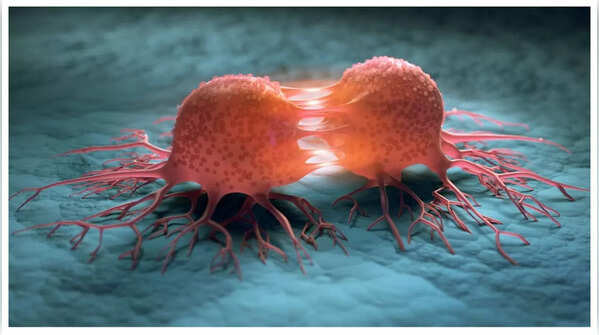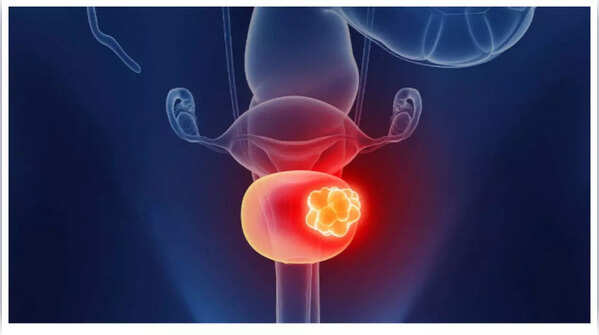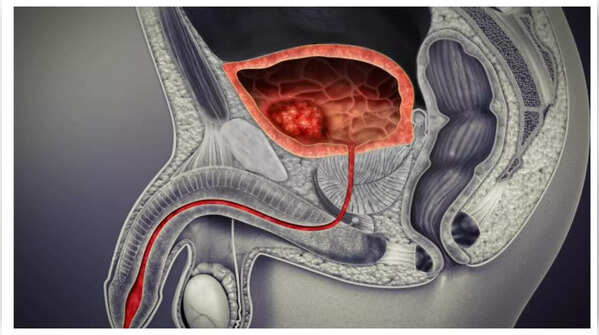Bladder cancer, characterized by the formation of cancerous cells within the bladder tissues, disproportionately affects men over the age of 55. While blood in the urine (hematuria) is widely recognized as a primary symptom, other less obvious indicators can be easily dismissed, particularly in the early stages. It's crucial to note that these symptoms are not exclusive to bladder cancer but warrant prompt medical attention if they occur.

An early sign of bladder cancer can manifest as frequent urination. This may involve needing to urinate more often than usual, even without increased fluid intake, or experiencing a sudden, intense urge to urinate despite the bladder not being full. Individuals might find it difficult to control this urge. Because these symptoms mimic those of a urinary tract infection or overactive bladder, they are frequently disregarded as potential cancer indicators. Persistent changes or accompanying symptoms necessitate medical evaluation to identify potential irritation or growths within the bladder.

Experiencing pain or a burning sensation during urination is another symptom often attributed to common infections like UTIs. However, bladder cancer can induce inflammation or irritation of the bladder lining, resulting in discomfort during urination. Unlike typical UTIs that respond to antibiotics, pain linked to bladder cancer may persist or recur. Consulting a doctor is essential if painful urination is accompanied by other symptoms such as blood in the urine or frequent urination.

Bladder cancer can sometimes create a constant feeling of needing to urinate, even when the bladder is nearly empty. This sensation can be bothersome as it persists even after using the restroom. It's often mistaken for a UTI due to the similarity in symptoms. Tumors or abnormal growths in the bladder can irritate nerves or reduce bladder capacity, which sends false signals to the brain. Immediate medical evaluation is vital if this feeling continues or worsens, as it may indicate bladder abnormalities, including cancer.

While early-stage bladder cancer may not cause pain, as the disease advances, discomfort or aching may arise in the lower back or pelvic area. This pain is often described as dull and persistent, leading to misinterpretation as muscle strain or other common ailments. Such pain may signify that the cancer has spread deeper into the bladder wall or adjacent tissues. Ignoring unexplained lower back or pelvic pain, especially when accompanied by urinary symptoms, is not advisable.

Although visible blood in the urine is a widely recognized symptom, the urine may sometimes appear normal while still containing small amounts of blood detectable only through lab tests. This condition, known as microscopic hematuria, results in urine appearing "off color" rather than distinctly pink or red. Due to the lack of obvious signs, microscopic blood in the urine often goes unnoticed unless a urine test is conducted for other reasons. Regular urine tests are beneficial for individuals with risk factors such as smoking, exposure to harmful chemicals, or a family history of bladder cancer, as they can aid in the early detection of these hidden signs.
Sources: Mayo Clinic, Cleveland Clinic, The National Cancer Institute
Newer articles
Older articles
 Esha Gupta Sets Record Straight: Actress Addresses Hardik Pandya Dating Rumors
Esha Gupta Sets Record Straight: Actress Addresses Hardik Pandya Dating Rumors
 Google Maps to Boost Navigation Accuracy with Fused Orientation Provider API
Google Maps to Boost Navigation Accuracy with Fused Orientation Provider API
 Global Vaccination Rates Plunge: Millions of Children Now Vulnerable to Preventable Diseases
Global Vaccination Rates Plunge: Millions of Children Now Vulnerable to Preventable Diseases
 Rishabh Pant: Greg Chappell Hails India Star as Cricket Revolutionary
Rishabh Pant: Greg Chappell Hails India Star as Cricket Revolutionary
 Skin Cancer Alert: How to Identify Suspicious Moles and Early Warning Signs
Skin Cancer Alert: How to Identify Suspicious Moles and Early Warning Signs
 Gavaskar Calls for Kuldeep Yadav's Inclusion in Second Test Amid Bumrah Fitness Concerns
Gavaskar Calls for Kuldeep Yadav's Inclusion in Second Test Amid Bumrah Fitness Concerns
 Is Daily Pooping a Must? Understanding Bowel Regularity and When to Worry
Is Daily Pooping a Must? Understanding Bowel Regularity and When to Worry
 Suryakumar Yadav's Sports Hernia: Understanding the Injury, Recovery, and Risk Factors for Athletes
Suryakumar Yadav's Sports Hernia: Understanding the Injury, Recovery, and Risk Factors for Athletes
 Vijay Sethupathi Apologizes Amid Controversy Over Son Surya's Debut Film 'Phoenix' and Alleged Video Removal Pressure
Vijay Sethupathi Apologizes Amid Controversy Over Son Surya's Debut Film 'Phoenix' and Alleged Video Removal Pressure
 Install Baccarat Hack Tool: The Secret to Winning
Install Baccarat Hack Tool: The Secret to Winning